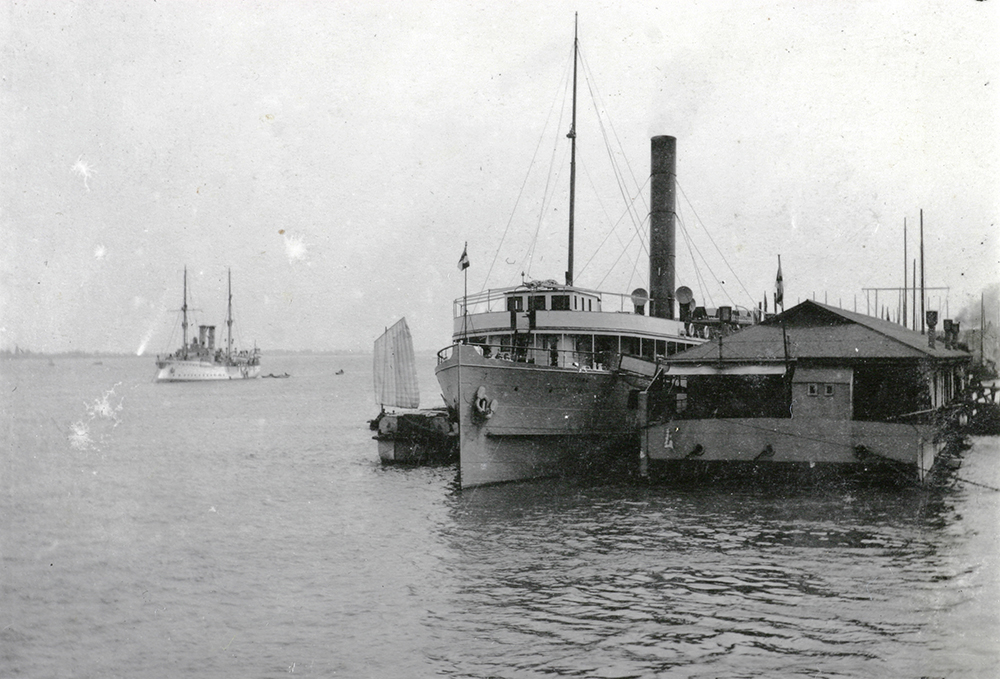Britain’s commercial forays into China in the late 19th and early 20th centuries were not always popular at the local level. More than a hundred towns and cities, large and small, were identified as places of potentially profitable trade by Britain and the other powers. Wuchow (Wuzhou) was opened as a Treaty Port by a British treaty in 1897. Some 300 kilometres up the West River from Canton (Guangzhou), Wuchow was the head of navigation for ocean-going vessels. Hopes were not high amongst the foreign merchants, but the opening of the West River was seen as an important step by Britain if French ambitions in the area were to be contained. The image above dates from from about 1915, and shows a foreign steamer loading up at a Wuchow pontoon, under the watchful and protecting eye of a British gunboat from the Royal Navy’s West River Flotilla.
Today’s Wuchow contains much of interest for the Treaty Port historian. The former British Consulate, opened in 1903, has been tastefully restored and is now a museum dedicated to the British period. A nearby enormous former American Christian Missionary Alliance building from 1902 is also in very good repair, but seems to lack a current purpose. Also still standing are the suite of seven Maritime Customs buildings erected in 1922. The condition of these is variable, with some in use, some almost derelict and some being renovated.
Wuchow and all the other foreign commercial stations in China are described individually and in detail in Robert Nield’s new book China’s Foreign Places: The Foreign Presence in China in the Treaty Port Era, 1840-1943, published by Hong Kong University Press.


